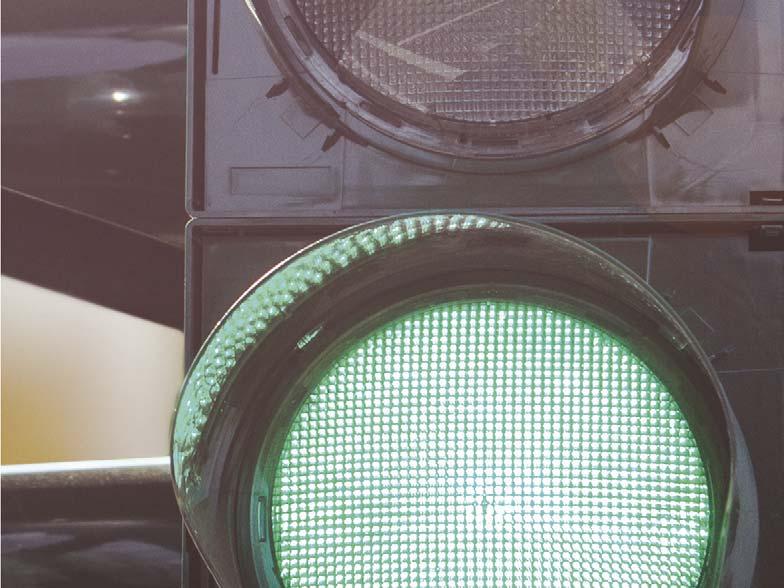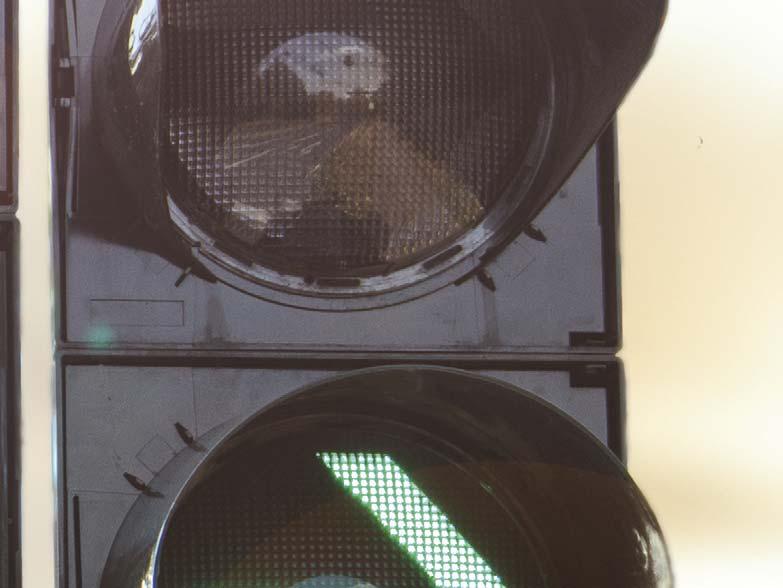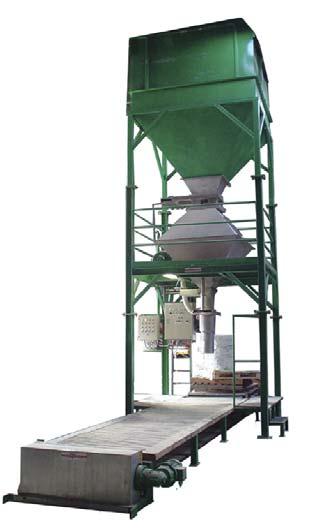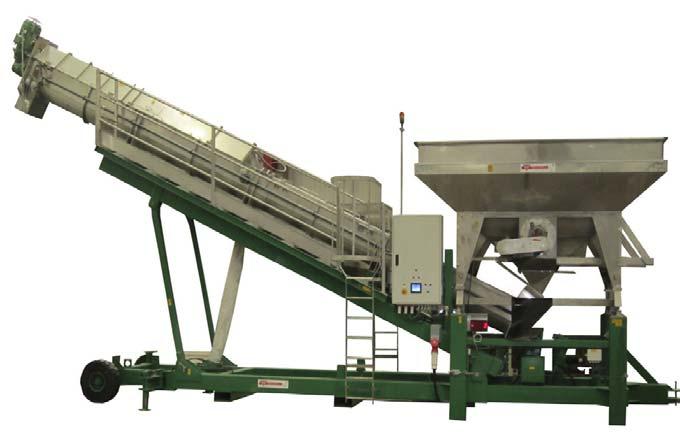
13 minute read
Securing The Path To Decarbonisation



Rochman Goswami and Dr. Michael Goff,
Black & Veatch, USA, consider the range of flexible options available to companies seeking to contribute to the decarbonisation of the ammonia industry.


he carbon economy is currently transitioning to one that
Tis carbon-free. Although politicians have shaped the carbon/decarbonising dialogue into one of ‘for’ and ‘against’, the reality is that the discussion should simply be a scientific strategy towards betterment of the environment, for quality of life and perhaps for ‘life’ itself. It is therefore up to those within the industry and scientific community to drive decarbonisation. Looking back at the past decade, there are reasons to be pleased with the progress, and yet there still is a tremendous amount of work that needs to be done on all fronts, from social acceptance to commercial viability, from statutory framework to policy initiatives and from scientific concepts to applied technology. One of the most important industries when discussing decarbonisation is ammonia, not only due to its current importance in crop production and as a basic chemical, but also for its potential as a non-carbon energy carrier.
Ammonia production currently contributes approximately 11% of global industrial carbon dioxide (CO2) emissions. While much of the CO2 is captured to produce urea in the fertilizer complex (which eventually gets released to the atmosphere), there still are opportunities to capture CO2 from the flue gas streams present in the ammonia facility. The easiest and lowest cost for reducing carbon emissions is often by increasing the efficiency of the production process.




DECARBONISATION






The key to adapting and moving towards decarbonisation is flexibility and a pragmatic approach. Instead of the two extremes, of either going all in or not doing anything at all, Black & Veatch recommend a flexible, strategic approach that proposes a goal based on a sound technical and commercial argument. In order to achieve this, there are some important considerations that must be deliberated.
Decisions must be based on sound business metrics. It is important to keep in mind that government programmes and subsidies are mostly time-bound and temporary, and these incentives may not form a strong commercial basis for investment in assets with a life of 30 – 50 years.
The increasing cost of carbon and pollution is currently trending due to legislative measures. As a result, the regulatory framework will slowly and definitively continue to turn against the carbon economy.
Companies should actively seek out decarbonising, while staying abreast of upcoming technologies and solutions. This is likely to become a defining factor for business success, and it is imperative that businesses stays abreast with technological developments. The cost of not upgrading on time is the risk of a company becoming obsolete or even irrelevant.
Decarbonisation should be incorporated into the sustainability goals of an organisation in order to provide a clear vision and direction to stakeholders, both internal and external, and most importantly to clients.
The regulatory framework as well as policy guidelines change with geographic constituencies and even within national boundaries. Trying to time and take advantage of a geographical constituency in respect to decarbonising may not be practical or advantageous. For multinational and/or multilocational organisations, it is recommended to establish consistent strategies that are forward-looking and can be easily adapted for decarbonisation based on technological feasibility. This ensures a clear understanding of goals and objectives within the organisation, and positions the organisation consistently across its portfolio of products and geographies. For instance, if an organisation is operating in a constituency where environmental standards are lax, they should still implement their decarbonisation strategies consistently across the portfolio. Besides consistency, discerning customers in constituencies with higher environmental standards will not be happy if they realise different standards are being applied across the board.
It is important to stay ahead of the curve on decarbonisation in order to differentiate the brand and to reflect the organisation as a good corporate citizen.
Today, sources of finance as well as clients are looking favourably at moving away from carbon. Staying ahead of the competition may become critical, as global supply chains are increasingly having a powerful influence on businesses. Once a company lose its clients to a competitor, it may become increasingly difficult to gain them back.
Changing lexicon
The decarbonisation of the ammonia industry is gaining attention not only in the effort to reduce emissions from ammonia production but also in the context of decarbonisation of the energy industry as a whole. New terms such as ‘green ammonia’, ‘blue ammonia’ and ‘grey ammonia’ are all being used within the industry to distinguish between how the ammonia is produced, lowering the carbon emissions. Green ammonia is characterised by not involving fossil fuels, with ammonia produced using water electrolysis to create hydrogen, using sustainable electricity in the process. Blue ammonia production involves carbon emissions, such as ammonia produced through the steam methane reformer (SMR) process; however, the carbon emissions are captured and stored and not released into the atmosphere. Grey ammonia equates to conventional ammonia production, using fossil fuels with carbon emissions released into the atmosphere.
Flexibility entails the understanding that smaller reductions in emissions are no less important and move the industry in the right direction. The vast majority of the annual global production of ammonia (over 160 million t) is still produced as grey ammonia. A flexible approach towards decarbonisation may be achieved by improving the energy efficiency of existing plants through a wide range of approaches. Often overlooked is the reduction of other greenhouse gas emissions in the fertilizer plant that often can be realised at low investment costs.
Some fl exible options
The increased focus and demand for decarbonisation has been targeted by countries and organisations aiming to reduce carbon emissions. Australia is targeting a carbon-neutral economy by 2050, while Japan has announced it has been purchasing alternative fuels with a reduced or zero-carbon footprint.
There are two main drivers for the renewed focus on reducing carbon emissions from ammonia and fertilizer plants; one is the push for decarbonisation in the chemical industry, and the other is the push for decarbonisation in the energy sector. Decarbonisation in the latter has predominantly been occurring through production of renewable electricity from solar and wind energy. The problem is that not all regions of the globe are rich in renewable energy resources. For complete decarbonisation in the energy industry to be achieved, two issues need to be addressed. The first is that electric energy needs to be consumed at the same rate that it is produced, since it cannot be economically stored in large volumes for extended amounts of time. Renewable energy production is not constant and varies seasonally and throughout the day. The second is that electricity cannot be transported over large distances, particularly not across continents. One solution is to convert renewable electricity into chemicals that can be more easily transported.
Green ammonia produced through renewable energy can be used as energy storage, a hydrogen carrier or a zero-carbon fuel. Ammonia can be easily stored as a liquid at -33˚C, as it has a higher energy density compared to other zero-carbon fuels such as hydrogen. There is an existing infrastructure in place to transport liquid around


the globe via trucks, rail, pipelines and barges. Ammonia can be cracked back to H2 and N2 by the end user, if required. Ammonia can also be used directly as a fuel in a gas turbine or internal combustion engine, creating zero-carbon emissions at the point of combustion. Due to the increased focus, technology improvements in this area – to use ammonia as an energy carrier – are evolving at a rapid rate.
Green ammonia can be produced by water electrolysis, using electricity to split water into hydrogen and oxygen. With the motivation of decarbonisation in mind, it makes sense to use renewable electricity. In certain regions at various times during the day, there can be an excess of renewable electricity generated without enough demand to utilise all the available supply. During these times, the value of the electricity is much lower than normal, and the production of hydrogen can be used to fully utilise the electricity available by acting as a storage media. Electrolysers can ramp up and down in a matter of seconds, making them well suited to absorbing the fluctuating rates of renewable energy production. Since it is not feasible to start and stop the ammonia synthesis unit as electricity supply changes, either hydrogen needs to be stored on-site or hydrogen from the electrolysis unit must be used to supplement the hydrogen produced at a traditional plant. It takes approximately 450 MW electricity to produce 1000 tpd of ammonia.
Blue ammonia is produced by capturing CO2 from flue gas either from the primary reformer, auxiliary boiler or co-generation unit. Besides the benefit of reducing carbon emissions, the CO2 captured can be used to produce more urea, beneficially paying for the cost of capturing CO2 from flue gas in the form of increased production of urea. Another option that is more applicable to new plants is to use an autothermal reformer (ATR) or partial oxidation (POX) process for syngas generation, instead of the more traditional SMR. The benefits of ATR and POX are that all of the CO2 produced in the reforming process is in the processing of gas at high pressures and it is easily removed. Both ATR and POX require an air separation unit (ASU) to produce oxygen for the ATR or POX and nitrogen to ammonia synthesis. An ASU system does add to the capital cost, but this is offset by the reduced size of the equipment in the front end of the ammonia plant, due to nitrogen being injected into the process just upstream of the syngas compressor and not acting as an inert in the front end of the plant. Additionally, ammonia plants already have a large process air compressor, similar to what would be used in an ASU, so these power costs offset each other.
In addition to CO2 emissions, there are other greenhouse gas emissions that can be reduced in a fertilizer complex. Greenhouse gases are given a value called the ‘greenhouse warming potential’, calculated by the greenhouse gases contribution relative to CO2. So, to achieve a reduction in carbon emissions and obtain carbon credits, other greenhouse gases should also be evaluated for reduction. Reduction of NOX emissions


from fired equipment and N2O in the nitric acid plant is a control strategy that has been used in fertilizer plants. Reduction in NOX emissions in fired heaters can be achieved with low NOX burners or with a selective catalytic reduction (SCR) unit to achieve very low NOX emissions. Secondary control is achieved by selective catalytic N2O decomposition in the ammonia burner of the oxidation step. Up to 90% reduction of N2O is possible. Tertiary controls use a non-selective catalytic reduction that reduces NOX and N2O emissions. In this process, a fuel – typically natural gas – is used to convert NOX and N2O to N2 and water with a catalyst. Typical N2O reductions of 80 to 95% can be achieved with tertiary controls.
There is an economic incentive to producing green ammonia; at approximately US$500/t, that cost includes the expense of capital investment, fixed operating costs (staff, maintenance, overheads) and the cost of electricity (assumed at US$30/MW-hr). Existing ammonia plants produce approximately 2 t of CO2/t ammonia, although this value can be a little less with newer, more efficient plants. With carbon credits of US$50/t, the cost of ammonia production is approximately US$400/t with the credits. While this cost is greater than an average ammonia price of US$250/t, there is a market for the zero-emission liquid fuel. The economics become more interesting when adding an electrolyser to an existing ammonia plant to supply, for example, 10% of the hydrogen. In this case the cost of the green ammonia production portion falls to US$300/t, assuming the same US$30/MW-hr electric cost, carbon credit and capital cost of electrolyser equipment while excluding the capital cost of the ammonia plant and other overheads.
The cost of blue ammonia production is a little more than traditional ammonia production. The capital and operating costs of CO2 capture of the flue gas is approximately US$60/t CO2. There is approximately 0.8 t CO2/t of ammonia in the flue gas, for an additional cost of production of US$50/t of blue ammonia. If carbon credits of US$50/t are available, this changes the total additional cost of production to US$10/t of blue ammonia.
Conclusion
In summary, there are multiple options and approaches to decarbonisation, and it is a journey. While it will become a business imperative in the short to medium-term, that journey must be commenced in ways that are suited technically and commercially to an organisation’s specific situation. There need not, and indeed must not be a ‘all or none’ mentality here. Set a pragmatic vision, strategies and goals towards decarbonisation and, as the proverb goes, ‘eat the elephant’ bit-by-bit. The path to decarbonisation lies in locally available natural resources, localised demand, local regulations and plant-specific technical and commercial solutions.
The Doyle and EMT Alliance
Can provide you with all the Blending, Bagging and Transport equipment you need.


Weighcont Blender


* Capacity of 20 to 200 ton per hour. * Unlimited number of hoppers. * Computer controlled. * Custom built. Fertilizer Inhibitor Treating Unit
* Portable. * Stainless steel. * Computer controlled. * High Capacity 120 m³ per hour.
EMT











